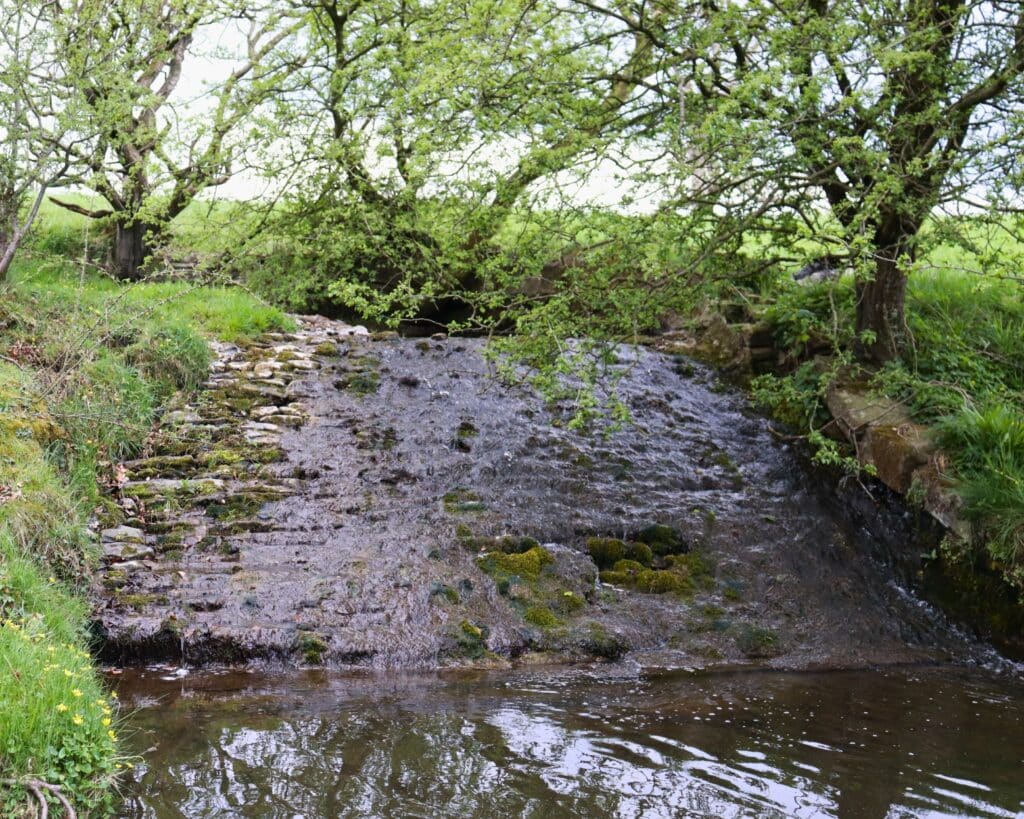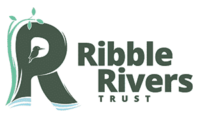
We’re on a roll with our fish easement projects as part of our Species Survival Programme, and the The Pendleton Fish Easement is now complete! Pendleton Brook rises on Pendleton Moor, flowing through Pendleton, and joining the River Ribble south of Clitheroe. Pendleton weir is still in use, abstracting water for livestock drinking troughs. However, the weir was a significant barrier for fish migration and was only passable under narrowly defined flow conditions.
Why do fish migrate?
Migrating is essential for many fish species, especially for reproduction. With species such as Atlantic salmon and sea trout travelling from the ocean to freshwater streams, navigating upstream to where they were born in order to spawn themselves.

In addition to spawning, the lifecycle of a fish can determine habitat requirements. This is because some species going through changes to survive in both fresh and salt water. For example, European eels begin their lives in the Sargasso Sea. They then drift across the Atlantic ocean on the Gulf Stream to Europe, which takes one year to two years to complete. The eels then make our freshwater streams their home for up to 20 years. Here they feed and grow in preparation for their long journey home to reproduce. For these eels to be able complete their lifecycle, free movement along streams is essential.
Migration also helps fish access feeding grounds. If food resources are limited in a section of watercourse, fish will naturally seek out other areas of higher food sources. Unfortunately obstacles such as weirs prevent this movement, reducing their feeding grounds and causing increased competition within their current habitat.
how has pendleton Fish Easement improved movement?
For the Pendleton Fish Easement, we’ve installed a baffle system directly onto the face of the weir. These are designed to provide optimal conditions to facilitate fish passage. The baffles do this by increasing the depth of water across each section of the weir, resulting in a series of pools up the weir face, allowing resting places for fish, whilst the shape of the baffles are designed to create turbulence in the water, helping to ease the way upstream for even small fish.

The additional notches break up the baffles allowing fish such as eels to pass up the face of the weir through the turbulent flow.
How will we know if the fish pass has worked?
Going forward the Ribble Rivers Trust’s monitoring team will monitor the effects of our work completing electrofishing and invertebrate surveys, to see how the invertebrate and fish populations react to the change in the habitat.
Part of the Ribble Revival: Room for Rivers Programme
Funding for this project has come from the Species Survival Fund. This £25 million initiative aims to restore over 3,300 hectares of habitat across the country. The National Lottery Heritage Fund administers the fund on behalf of Defra, and Ribble Rivers Trust has received £1.65 million to support our work. Fellow wildlife charities, farmers, and community groups nationwide have also benefitted the fund. Together, we’re helping to accelerate nature recovery and protect vital species.

Rivers are at the heart of our local landscapes. Whether you’re casting a line, exploring a riverside trail, or simply basking in the beauty of nature, you can help protect these special places now, and for generations to come.
By becoming a Ribble Rivers Trust supporter for just £3 a month, you’ll be funding real, on-the-ground action.
Ready to make a difference? Learn more here: ribbletrust.org.uk/become-a-supporter

